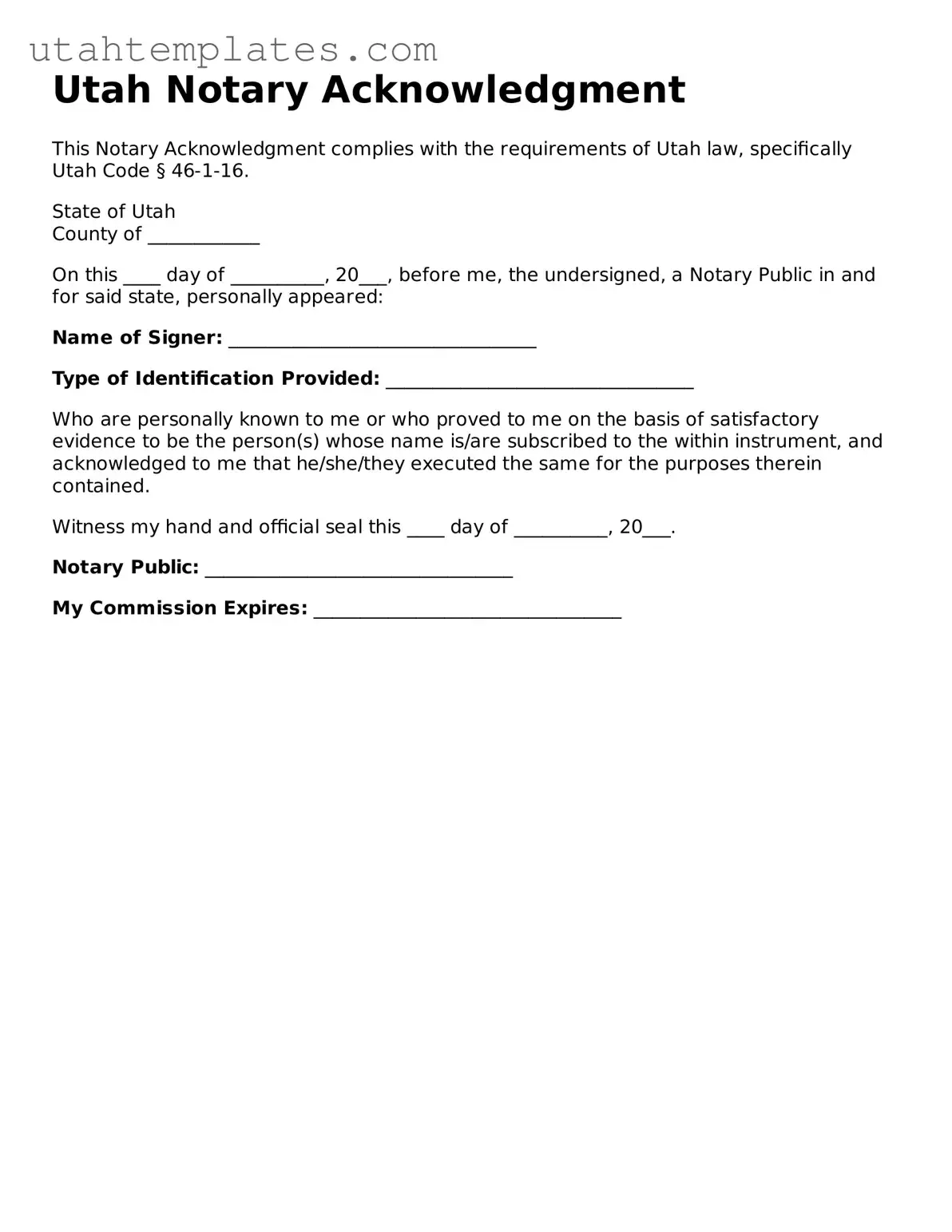Free Notary Acknowledgement Form for Utah
The Utah Notary Acknowledgment form is a legal document used to verify the identity of a signer and confirm their willingness to sign a document. This form plays a crucial role in ensuring that important transactions are conducted with integrity and transparency. By using this acknowledgment, individuals can enhance the credibility of their documents and protect themselves against potential disputes.
Launch Notary Acknowledgement Editor Here
